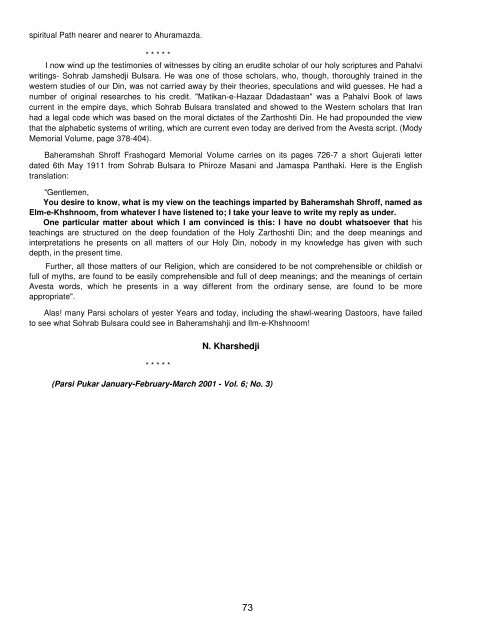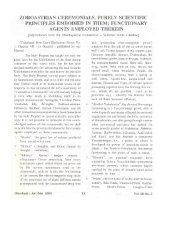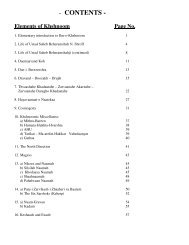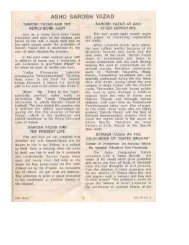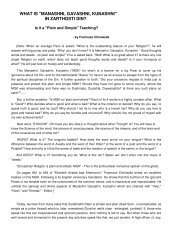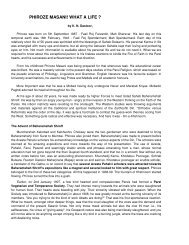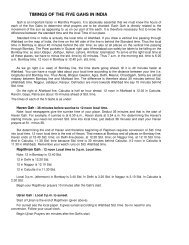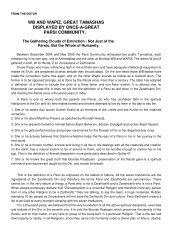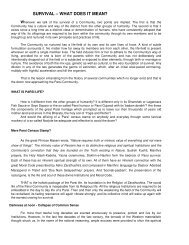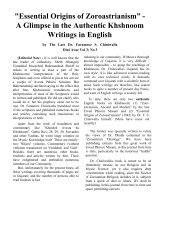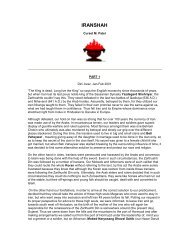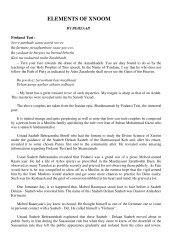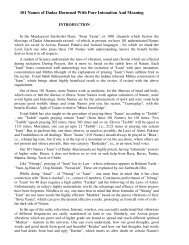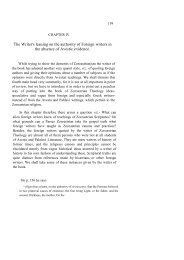Ilm-e-Khshnoom - Traditional Zoroastrianism: Tenets of the Religion
Ilm-e-Khshnoom - Traditional Zoroastrianism: Tenets of the Religion
Ilm-e-Khshnoom - Traditional Zoroastrianism: Tenets of the Religion
You also want an ePaper? Increase the reach of your titles
YUMPU automatically turns print PDFs into web optimized ePapers that Google loves.
spiritual Path nearer and nearer to Ahuramazda.<br />
* * * * *<br />
I now wind up <strong>the</strong> testimonies <strong>of</strong> witnesses by citing an erudite scholar <strong>of</strong> our holy scriptures and Pahalvi<br />
writings- Sohrab Jamshedji Bulsara. He was one <strong>of</strong> those scholars, who, though, thoroughly trained in <strong>the</strong><br />
western studies <strong>of</strong> our Din, was not carried away by <strong>the</strong>ir <strong>the</strong>ories, speculations and wild guesses. He had a<br />
number <strong>of</strong> original researches to his credit. "Matikan-e-Hazaar Ddadastaan" was a Pahalvi Book <strong>of</strong> laws<br />
current in <strong>the</strong> empire days, which Sohrab Bulsara translated and showed to <strong>the</strong> Western scholars that Iran<br />
had a legal code which was based on <strong>the</strong> moral dictates <strong>of</strong> <strong>the</strong> Zarthoshti Din. He had propounded <strong>the</strong> view<br />
that <strong>the</strong> alphabetic systems <strong>of</strong> writing, which are current even today are derived from <strong>the</strong> Avesta script. (Mody<br />
Memorial Volume, page 378-404).<br />
Baheramshah Shr<strong>of</strong>f Frashogard Memorial Volume carries on its pages 726-7 a short Gujerati letter<br />
dated 6th May 1911 from Sohrab Bulsara to Phiroze Masani and Jamaspa Panthaki. Here is <strong>the</strong> English<br />
translation:<br />
"Gentlemen,<br />
You desire to know, what is my view on <strong>the</strong> teachings imparted by Baheramshah Shr<strong>of</strong>f, named as<br />
Elm-e-<strong>Khshnoom</strong>, from whatever I have listened to; I take your leave to write my reply as under.<br />
One particular matter about which I am convinced is this: I have no doubt whatsoever that his<br />
teachings are structured on <strong>the</strong> deep foundation <strong>of</strong> <strong>the</strong> Holy Zarthoshti Din; and <strong>the</strong> deep meanings and<br />
interpretations he presents on all matters <strong>of</strong> our Holy Din, nobody in my knowledge has given with such<br />
depth, in <strong>the</strong> present time.<br />
Fur<strong>the</strong>r, all those matters <strong>of</strong> our <strong>Religion</strong>, which are considered to be not comprehensible or childish or<br />
full <strong>of</strong> myths, are found to be easily comprehensible and full <strong>of</strong> deep meanings; and <strong>the</strong> meanings <strong>of</strong> certain<br />
Avesta words, which he presents in a way different from <strong>the</strong> ordinary sense, are found to be more<br />
appropriate".<br />
Alas! many Parsi scholars <strong>of</strong> yester Years and today, including <strong>the</strong> shawl-wearing Dastoors, have failed<br />
to see what Sohrab Bulsara could see in Baheramshahji and <strong>Ilm</strong>-e-<strong>Khshnoom</strong>!<br />
* * * * *<br />
N. Kharshedji<br />
(Parsi Pukar January-February-March 2001 - Vol. 6; No. 3)<br />
73


